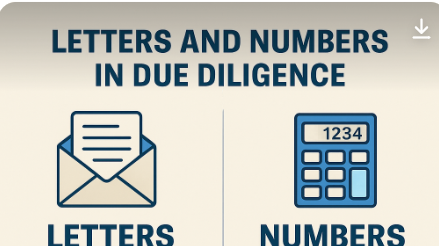
On every deal we have ever worked on at Peregoff & Co., the transaction had a narrative and an objective. The narrative was the description as to how the sets of inputs and opportunity would come together to yield outcomes, and those outcomes were usually numeric at some level, often relating to the expected revenue growth the deal would generate over a period of time; and these numbers would be described by a “business case.”
The core focus of a due diligence exercise is to balance the narrative and the numbers. How to ensure that the narrative is not just a figment of the imagination of a business development team? How to make sure that the opportunity to take risk is not inhibited by a structured model that couldn’t be “solved”?
This focus is on several levels: product development, service delivery, operational efficiency, financial performance, to name just a few. It’s extremely important when diligencing sales performance and projections.
At Peregoff & Co., we’ve seen organizations invest in core teams of “business modelers” to specifically focus on creating models that align the narrative and the numbers. It’s not a skill replaceable by AI, and the expertise and insight of the people who focused on this exercise had benefits beyond the validation of M&A thesis: This team was often more reliable than selling management to assess the standalone opportunity of the target company.
The business modeler team and the “CAM” (Corporate Acquisition Model) — management by acronym is a topic for another post — are extremely valuable tools for supporting a conversation and an analysis about transaction viability and effectiveness. However, it remained the role of the deal leader team to make sure that the overall diligence process reflected the nature of the transaction: Was this a deal where the narrative led the numbers, or the numbers drove the story?
Because post-transaction tracking provided all the data and tried to record the narrative, we could usually see how effective the deal team had been at balancing the narrative and the numbers. When they were balanced, the transaction overachieved its objective, usually seen from any lens. But when the diligence had failed to align between them, we would see underperformance on both the narrative and the numbers.
In all of our transactions that closed, we believed that we were pretty effective at due diligence. We do not recall on any diligence that we led finding a “fact” or “assumption” in the post-mortem that we missed. In fact, in all of our years, we believe there were three material transactions where post-transaction performance could be related to missing or inaccurate data in a DD report, and two of those were debatable. However, there are many transactions that were not well served because as the diligence team checked the numbers, we ignored the narrative. Or, as we bought into the narrative, we didn’t pay close enough attention to the numbers. Similarly, we have successes where the deal delivered on its narrative promise for clients and stakeholders, even though the numbers showed significant risk; and deals that produced good numbers even as the narrative didn’t meet the market conditions.




